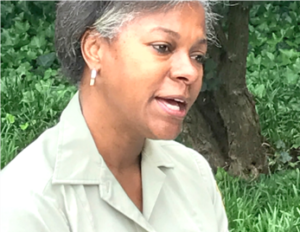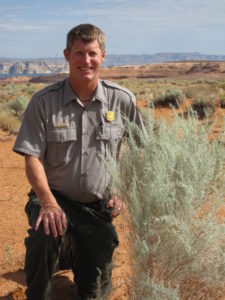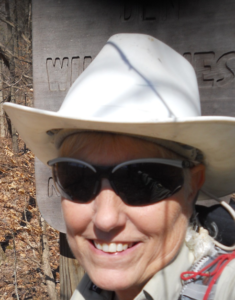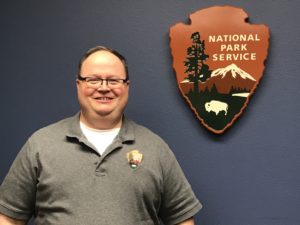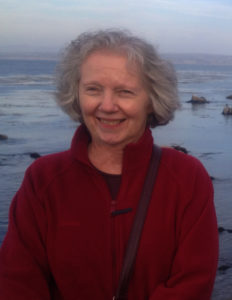The bill, which now moves to the full House of Representatives for consideration, would make it easier for Corps to partner with federal agencies and engage more young adults and veterans in addressing backlogged maintenance and other critical projects on America’s public lands and waters.
Contact:
Hannah Traverse
The Corps Network
1275 K St NW – Suite 1050
Washington, DC 20005
202-737-6272
htraverse@corpsnetwork.og
January 17, 2018 – FOR IMMEDIATE RELEASE
View press release from the office of Rep. Martha McSally (R-AZ)
WASHINGTON, DC – The Partnership for the 21st Century Conservation Service Corps (P-21CSC) applauds the United States House Committee on Natural Resources for passing the 21st Century Conservation Service Corps Act (21CSC Act, H.R.2987) today, January 17, 2018. The P-21CSC also thanks Rep. Martha McSally (R-AZ) for introducing the legislation in the House and for championing its progress. The bill now moves to the full House of Representatives for consideration.
“This staggering backlog in park maintenance projects hampers Arizonans’ ability to fully enjoy and access the natural beauty of our state,” said Congresswoman McSally. “My bipartisan bill leverages existing resources in a smarter way to get these delayed and deferred maintenance projects moving. It also expands opportunities for youth and veterans who need service hours to volunteer to help our parks. This bill is a win for everyone—taxpayers, national park users, veterans, and even inner-city youth. I’m thankful for the Committee’s support of my bill and I will continue to shepherd this legislation through until it is public law.”
“I applaud the House Committee on Natural Resources for passing our 21CSC Act, which would create more opportunities for Americans to serve. In Arizona and across the country, our national parks and public lands are in need of help as a backlog of critical projects grows. Our legislation would enable young people and transitioning veterans to serve their communities by enhancing our national parks and public lands, while spending no additional taxpayer dollars. I urge my colleagues in the Senate to follow the House’s lead by taking up and passing this important legislation,” said Senator McCain, who introduced a companion bill in the Senate.
Corps are community-based programs that provide young adults and recent veterans the opportunity to serve our country, advance their education and obtain in-demand skills. Serving in crews or individual positions, Corpsmembers spend up to a year performing meaningful projects that address conservation and infrastructure concerns, wildfires and natural disasters, outdoor recreation access, and a range of other issues. During their service, 21CSC participants gain hands-on work experience and prepare for careers in the growing recreation, natural resource and restoration economies. Since the 1950s, Corps have partnered with land management agencies, like the U.S. Forest Service and the agencies of the Department of the Interior, to complete mission-critical projects on public lands.
The 21CSC is a national initiative to expand Corps to annually engage 100,000 young adults and veterans in outdoor work and national service, including service opportunities supported by AmeriCorps. The backbone of the 21CSC is a membership of more than 220 local and regional 21CSC organizations (Corps) across the country that, every year, collectively enroll more than 25,000 young people and veterans.
Through public-private partnerships between 21CSC organizations, resource management agencies, and the private sector, the 21CSC builds rural and urban economies by engaging young adults and veterans in projects that increase access to public lands and enhance the natural resource infrastructure that supports our country’s $887 billion outdoor economy. America’s main resource management agencies have a maintenance backlog totaling over $18.6 billion, but, by partnering with 21CSC organizations, these agencies can leverage their funding to cost-effectively engage Corps in building trails, fighting wildfires, supporting productive fish and wildlife habitat, and generally maintaining parks for public access.
Corps are presently authorized to partner with federal land management agencies through the Public Lands Corps Act of 1993. The 21CSC Act would update this legislation to recognize the need for a new 21st Century Conservation Service Corps that will address modern conservation, recreation, forestry, and infrastructure needs on public lands and communities across the country.
The 21CSC Act would allow federal land and water management agencies to create formal, more flexible partnerships with 21CSC member organizations. It would also enable additional federal agencies to more easily partner with 21CSC organizations to accomplish their goals. Specifically, the 21CSC Act would:
- Expand the number of federal agencies that can work with 21CSC programs. Enlisting Conservation Corps to do priority work has often proven to be more cost-effective for federal agencies.
- Encourage federal agencies to collaborate, and require that they use only existing resources to work with 21CSC programs, meaning there would be no additional cost to tax-payers.
- Designate coordinators at participating agencies to ensure the efficient functioning of the 21CSC.
- Prioritize the engagement of recent veterans, native, and disadvantaged youth in 21CSC programs, and establish a new Indian Youth Corps program.
- Establish standards for data collection and measuring the effectiveness of 21CSC programs.
- Provide two years of non-competitive hiring eligibility with federal agencies for young people and veterans who gain valuable skills through service in 21CSC programs.
- Provide new Internship and Resource Assistant opportunities for Corpsmembers, along with direct hiring authority.
The bipartisan 21CSC Act was introduced in the United States House of Representatives (H.R.2987) and Senate (S.1403) on June 21, 2017. The bill was introduced in the Senate by Sens. John McCain (R-AZ), Michael Bennet (D-CO), Lamar Alexander (R-TN), and Tom Udall (D-NM). It was introduced in the House by Reps. Martha McSally (R-AZ), Seth Moulton (D-MA), Scott Tipton (R-CO), and Raúl Grijalva (D-AZ). Additional cosponsors have since joined in both the House and Senate.
An earlier version of the 21CSC Act was introduced in the Senate in August 2015 (S.1993) by Senators McCain and Bennet, and in the House in April 2016 (H.R.5114) by Representatives McSally and Moulton. The Public Lands Service Corps Act (PLSCA) – a similar bill – was most recently introduced in the House in April 2015 (H.R.2167) by Rep. Grijalva and in the Senate (S. 1160) by Sen. Udall. Rep. Grijlava has been a long-standing champion of Corps and the PLSCA. The bill reviewed today is a combination of previously introduced versions of the 21CSC and PLSC Acts. It represents a bipartisan effort among sponsors and cosponsors of both bills to advance Corps as a public-private strategy to meet the needs of America’s resource management agencies and provide work opportunities for young adults and veterans.
“On behalf of America’s Service and Conservation Corps, thank you Chairman Bishop and the House Committee on Natural Resources for considering amendments and advancing the 21CSC Act. To Congresswoman McSally, Congressman Moulton, Congressman Grijalva, as well as all of the bill’s cosponsors in the House, we are deeply grateful for your leadership,” said Mary Ellen Sprenkel, President and CEO of The Corps Network and Co-Chair of the Partnership for the 21CSC. “America’s resource management agencies face a multi-billion-dollar maintenance backlog and the demands of responding to increasingly costly fires and natural disasters. The 21CSC offers a solution to these issues and a way to engage our next generation of outdoor stewards, recreationists, sportsmen and women, and resource managers. We look forward to working with Congressional offices to see the 21CSC Act signed into law.”
“Each year, over 500 young people and veterans with the Arizona Conservation Corps contribute over 250,000 service hours on the vast amounts of public lands in Arizona. Veterans continue their service here on the home by protecting communities from wildfire. Young people help reduce backlogged maintenance that challenges our well-loved public lands by working on trails and waterways in parks and forests statewide,” said Paul Schmidt, Executive Director of the Arizona Conservation Corps, a 21CSC organization. “There is a growing need for maintenance and protection of our public lands for the benefit of local economies and different user groups. There are also more young people wanting to contribute to this effort so increasing opportunities for young people to serve on public lands is critical. I sincerely thank the House Committee on Natural Resources, Rep. McSally, and Rep. Grijalva for your commitment to young people and veterans and for support of the 21CSC Act.”
“American Conservation Experience (ACE) would like to thank the House Committee on Natural Resources for advancing the 21CSC Act, and thank Rep. McSally and Rep. Grijalva for their leadership on behalf of Corps,” said Chris Baker, President of American Conservation Experience, an Arizona-based 21CSC organization. “In a nation too often divided, Rep. McSally’s efforts championed bipartisan support to facilitate youth and veterans’ employment through service to our nation’s public lands. Rep. McSally and all the bill’s sponsors and cosponsors have truly helped elevate service in our national parks, forests, refuges and recreational areas to a national priority. The 21CSC Act will provide vital support to help ACE, the Arizona Conservation Corps, and over 220 other 21CSC organizations nationwide facilitate life changing-outdoor service opportunities for young men and women.”
The 21CSC initiative was launched as a partnership between America’s Corps and a number of federal agencies with a goal of promoting a 21st-Century Conservation Service Corps to provide job training and maintain and preserve public lands. The 21CSC is supported by the past five Secretaries of Interior (two Republicans and three Democrats) and has received investments from a wide variety of private businesses, foundations, and philanthropic organizations. Secretary of Interior Ryan Zinke was a co-sponsor of the 21CSC Act when he was a United States Representative for Montana.
###


